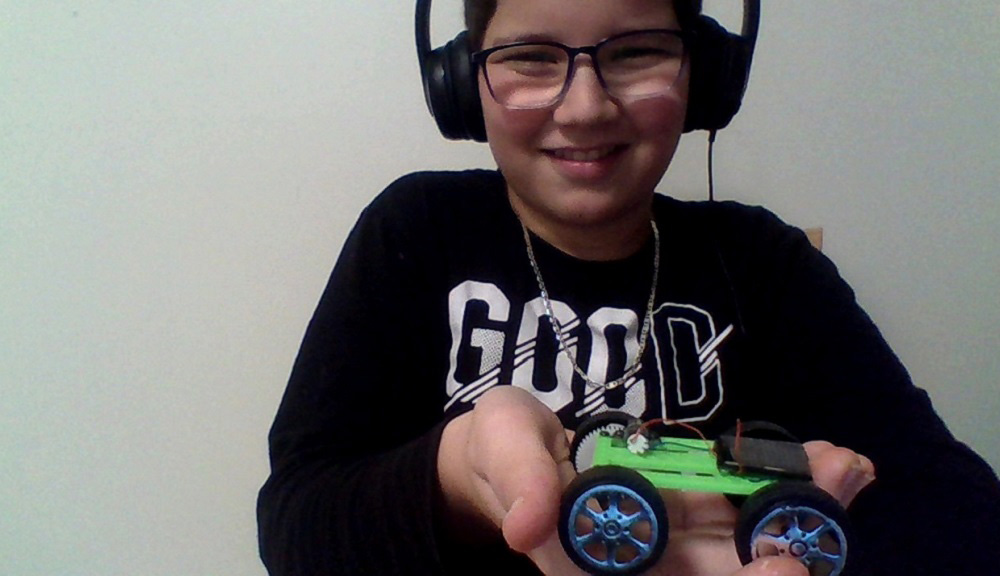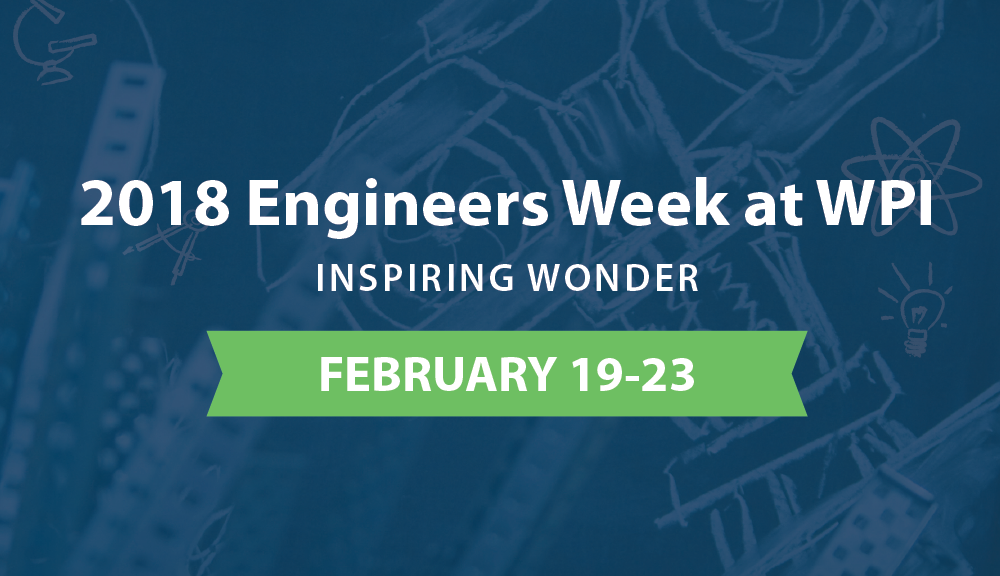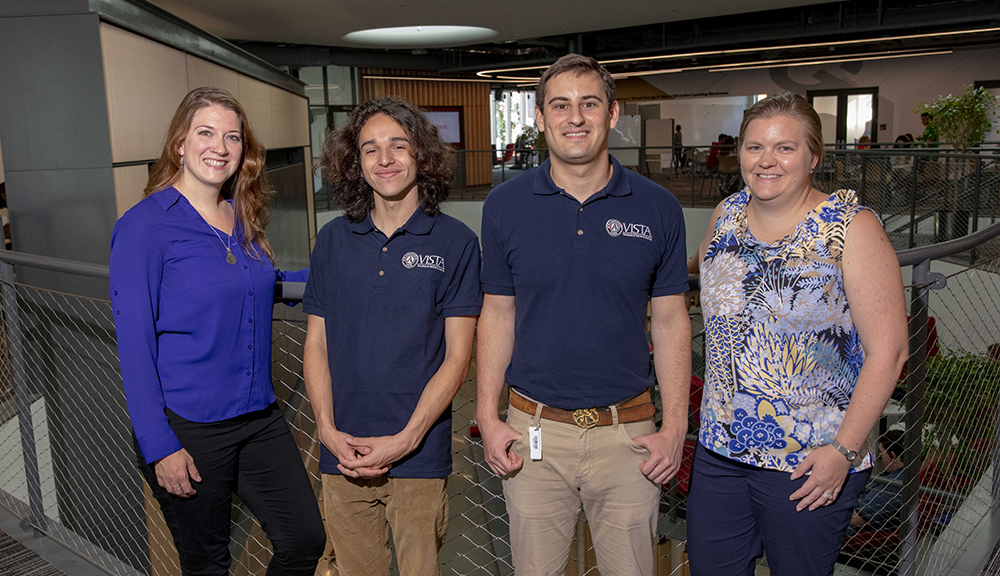Well, if you’re an Engineering Ambassador at WPI who just participated in a simultaneously goofy, anxiety-producing, and inspirational improv workshop, you probably realize that a gaffe isn’t the end of the world. But it’s up to you to make it work.
Last weekend, WPI was ground zero for more than 160 students from nine colleges who came to the northeast regional workshop conference for the Engineering Ambassadors Network (EAN) program. With a blend of class learning, team challenges, critiques, and presentations, the workshop helped build skills needed for making engaging and exciting presentations.
According to Jenna Noel-Grinshteyn, program manager for WPI’s Engineering Ambassadors and pre-college outreach programs, the weekend helped new ambassadors sharpen their presentation skills, but also offered a specific session geared toward the more experienced senior ambassadors.
“We want them to have the confidence, the flexibility, and the flexible thinking to adapt when something goes wrong.” – Kimberly MacLean, lead education innovator at Speechless
A two-hour improv program used exercises as diverse as sharing stories about a winter coat with total strangers, to active listening, to rhythmic clapping that required razor-sharp attention skills to show participants why it’s okay when something goes wrong and how to get through it.
“We want them to get comfortable when they don’t know what’s coming and they have to make it work,” says Noel-Grinshteyn. Engineering ambassadors have to be able to think on their feet and recover when computers crash, colleagues get sick, or a crucial Power Point screen shows up blank, she says.
And while the seasoned ambassadors have presentation skills down to a fine-tuned science, it’s harder to know how to keep things moving forward when something goes haywire. Call it the necessary life skill of knowing how to successfully fly by the seat of your pants. When the unexpected throws off a perfect presentation, knowing how to recover can make or break what happens next.
“It’s harder to train them for when they don’t have time to prepare,” says Christine Haas, director of EAN, principal of Christine Haas Consulting, LLC, and one of the original co-founders of WPI’s EA program. “We have lots of those situations in our everyday lives.”
Typically, the ambassadors set a very high bar for themselves, says Haas. “We want them to understand that it’s okay to make a mistake,” she says.
Improv specialists from the improv centric company Speechless roused the crowd at 8 a.m. to show them, with laughs and goofiness, that making a mistake in front a roomful of people isn’t the end of the world.
“It’s a game changer,” says Kimberly MacLean, lead education innovator at Speechless, of the improv sessions. “We want them to have the confidence, the flexibility, and the flexible thinking to adapt when something goes wrong.”
WPI is one of the Engineering Ambassadors Network’s four founding schools—with Penn State, Rensselaer Polytechnic Institute, and the University of Connecticut—launching the program on campus in 2011. EAN is a program, not a club, with a competitive selection process, a stipend earned, and an internship component, says Noel-Grinshteyn. This year WPI has 41 ambassadors— approximately one quarter of them are new to the program.
Engineering Ambassadors Network is a worldwide program that helps spread the word about what an engineering career might really look like. The program attracts students who love engineering and want to help middle- and high school students catch the spark of the path they find so exciting. College ambassadors give presentations at middle schools and high schools to help students see what engineering is all about and what engineers really do.
At WPI, the senior ambassadors saw how a reaction to a mistake can actually help the presentation. In the two short, early Saturday morning hours, the energy in the room changed dramatically. “I saw a room of students go from fearful and anxious, feeling trepidation, to joyful and feeling successful,” says Speechless specialist Chris Libby. As he told the students, “Wherever you end up, it’s going to be okay.” Rather than seeing a mistake as a failure, they could actually turn it around into one of the best presentations they’ve ever given.
And the students seemed to take to heart the message from MacLean and Libby. As engineering students, they aren’t particularly okay with being wrong, so the exercises help their brains react without freezing up.
Jon Van Blarcum ’17 says that not knowing the other students evened the playing field in the exercises. “I will definitely have more fun with presentations,” he says. “This made it more engaging.”
Rachel Komara ’16 says she never realized the importance of preparing yourself physically for a presentation. Students went through a series of facial, vocal, and movement exercises to get moving for the workshop. “Once they warmed us up, I got more comfortable,” she says. “Warming up lets you loosen up. They showed us how fun it can be.” Hallie Kenyon ’17 agrees. “Warming up can really help you improvise more,” she says. “Just like you warm up before you exercise.”
Weaving your personality into a presentation is also a great way to engage your audience, says MacLean. “When you are presenting, what’s personal is your currency,” she says. “It’s how people connect with you and invest in you. It’s what you are bringing to the table. When you are giving a presentation, you are the specialness and part of the specialness is your story. What story can you add?”


